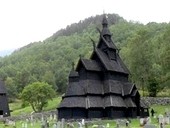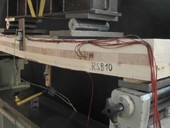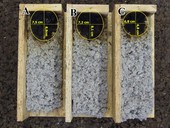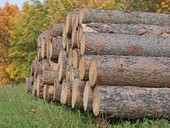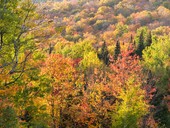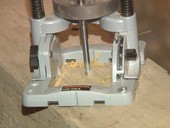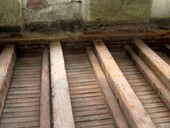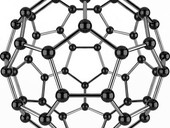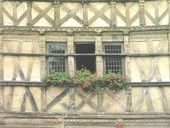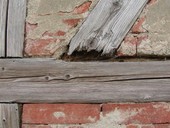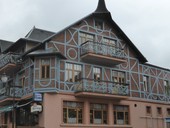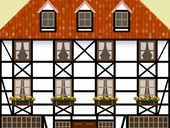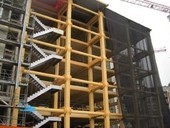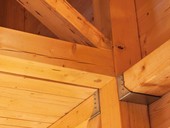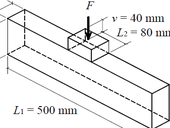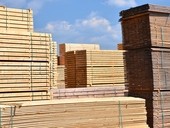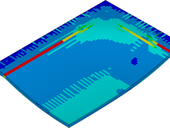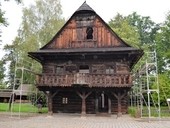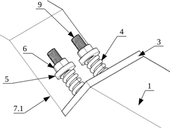This article focuses on the fire protection of wooden churches and other wooden structures that are listed in Norway and Poland and introduces several of them.
Archiv článků od 27.2.2017 do 19.3.2018
The text describes why and under what conditions the use of beech wood in building structures. Given the legislative and experimental requirements for verification of properties of beech sorting into classes of forts "D". Evaluation of the quality beech wood over the strength of the reliable design, production technology class predictive level as well as the durability of wooden building elements.
Cellulose insulation is one of the minority types of heat insulating materials, but their use has increased significantly in recent years. The aim of the contribution is to assess the impact of its bulk weight on the processes of smothering and glowing. The resistance wire was used as the initiator. In addition to visual observation, carbon dioxide concentrations and optical smoke density were also recorded. The results were evaluated in the form of graphs and tables.
Article deals with finding of physical and mechanical properties of timber at various moisture and it also verifies addictions of single properties on moisture content of timber. In experimental part of this thesis, the density, the dimensional and volumetric swelling and the compressive strength parallel to fibre will be determined on test samples. After evaluating all the tests, the graphs of these parameters depend on various samples of wood moisture determined by weight will be created.
In the last two decades, the US hardwood industry has experienced an important increase in their exports to key markets in Southeast Asia, and Western Europe. However, the export to Easter Europe is currently limited. In these emerging economies, production of furniture and many different kinds of wood products are on the rise. Favorable labor costs, progressive design, and available material resources are key factors that sustain the growth of these industries. The forest products industry is also significant consumer of hardwood lumber. Despite the fact that Easter European countries have its own hardwood material resources, the rapid industry growth, increased sustainability practices, and increased demand of high quality material may require the need for additional material sourcing.
The paper discusses approaches to safety assessment of historic timber structures using testing of very small specimens extracted from a historic structure or by direct in-situ testing. The presented methods must to take into account conditions given by the EN 16085. They further consider environmental influences and correlations of characteristics achieved by various SDTs.
The paper shows reasons for carrying out restoration of historic wooden ceiling using “dry method” – interaction between historic wooden beams and wood-based panels. This article summarizes the process of reconstruction of historic wooden ceilings, describes the problems to be addressed and it summarizes experience with completed ceilings in Brno,Czech Republic.
The possibilities of using nanomaterials are quite broad – from increasing the hydrophobicity and photostability of surfaces, through improving the mechanical properties of traditional materials, aiding in the diagnosis and therapy of certain diseases, repairing damaged parts of the tissue, and solving problems in decontamination of the environment. Intensive research also takes place in their applications to increase the resistance of wood to wood-boring fungi and wood-destroying insects. Nanomaterials, including nanocellulose, are perspective in the field of wood fire protection, which may be important in the evolving trend of wood building construction.
At present, there is growing interest in the realization of multi-storey wooden buildings. In the case of multi-storey wooden buildings, their safety, stiffness and acoustics are of key importance. The submitted paper focuses on the issue of fire safety of multi-storey wooden buildings, which is currently the subject of major discussions.
A growing environmental awareness and desire for sustainable solutions and healthy living conditions, especially in Europe, lead to an increasing demand for timber structures. High speed, excellent cut quality and accuracy of CNC processing allows an effective produce of timber structures by traditional carpentry procedures. This article responds to current problem of load bearing capacity calculations of traditional carpentry joints. This way of structural joints has not sufficient support in current standards and therefore design relies on simple empirical relationships based on experience. This paper presents the experimental and calculation methods for investigation of static behaviour and load bearing capacity of carpentry joints.
Computing models for structural behaviour and determination of traditional timber butt joints using analytical relations are presented in this paper. A component method is a base of the computing technique introduced herein. This method is usually used for steel joints design. The component method is based on dividing a joint into individual components. These are defined by partial joint component stiffness. An analytical solution includes a subsidence effect of wooden material in a close proximity of compressive loading. Analytical computation results are compared with the experimental outputs. A design procedure according to Eurocode 5 for a load capacity determination of perpendicularly loaded structural element is stated in the paper.
This report presents a new method for designing composite timber steel-fibre-reinforced concrete slabs with unprotected secondary timber beams subject to fire, taking tensile membrane action into account. The FE-model consists of material tests, push-out shear tests and beam tests, which had formed a preliminary study. The FE-model represents the behaviour of the floor slab tested in experiment, together with a collapse prediction for the slab. The FE-model with characteristic material properties includes a safety concept based on the Eurocode standards, and is applied to define the fire resistance of various types of timber steel fibre-reinforced concrete flooring.
This paper discusses the practical use of microwave technology in construction practice. Opinions on the use of EMW devices are not only among the general public quite different. From boundless praise, to the uncritical condemnation. The reason for this situation is the lack of awareness of experts and the public about what is and what is not possible to expect from this technology.The article conclusions which we reached on the basis of experiments conducted at the Faculty of Civil Engineering Brno and subsequently verified measurements in field practice. The aim is to provide basic information about how to use microwave technology. Their benefits but also the risks that this technology brings along.
The article deals with hot-air treatment of a historically valuable Rožnov town office, built in 1770, which was transported to the Wallachian Open Air Museum in Rožnov pod Radhoštěm in 1924 as the first building of the currently extensive premises of this national cultural heritage. The method of wooden structure hot-air treatment was used for the first time in the territory of the Czech Republic in 2010. It has been used in western European countries (especially Denmark and Germany) approximately since 1930. This comprehensive method is governed by the German standard DIN 68 800 – Part 4 [1] and it is especially used for historically valuable buildings where emphasis is put on the preservation of the original wooden structure attacked by wood-destroying insects, usually of the long-horn beetle family (Cerambycidae) oranobium beetle family (Anobiidae). The goal of the article is to explain the hot-air treatment method to professional public using an example of one of implementations.
This paper presents a technical solution for bended timber beams and their strengthening. Beams exposed to bending are of the most common use as structural elements. King-post trusses, sling-braced trusses, tie-rod trusses or additional timber beams were assembled to cover large spans in the past. These structures required using additional structural members which limited the space above or underneath a subjected beam. The technical solution presented herein considers a tie-rod truss principle applied on a beam, similar to post-tensioning reinforced concrete structures.
zpět na aktuální články
